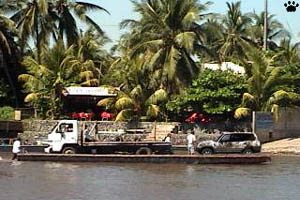
River ferry, Chiapas.
Driving through Mexico
In October-December 2003, I drove from Boulder, Colorado to
Nicaragua and back, living in my car, visiting numerous ancient cities, Nature
reserves, and other interesting places along the way. Here are some things I've
learned.
 |
El Elegante, a maar (collapsed
volcanic crater) in El Pinacate Nat'l Park, Sonora. The nearby part of US/Mexican
border is the easiest
and most popular place for illegal border crossings. Composition of 8 images. |

Resplendent quetzal
(Pharomachrus
mocinno), Chiapas. |
Driving across the Mexican border is an experience
that makes you lose any respect for US residents as a nation. Mexico is a fascinating
country, with Nature and culture much more diverse than in the States. It is safe
and easy to travel. All you have to do (if you are a US citizen) is get behind
the wheel and drive south. Nothing stays between you and Darien in Panama, where
the road ends. One would expect Mexico to be crowded with tourists. But as soon
as you get a hundred miles inside, you see no more gringos around, except in a
few boring tourist traps like Cancun area and Puerto Vallarta. |

Resplendent quetzal
(Pharomachrus
mocinno), Chiapas. |
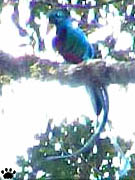 |
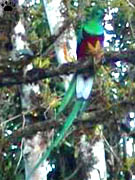 |
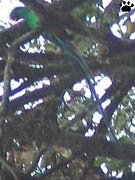 |
 |
| Tails of quetzals get
longer as you move from south to north of their range. Left to right: Cerro de
la Muerte (Southern Costa Rica), Monteverde (Northern Costa Rica), Biotopo Mario
Dary Rivera (Guatemala), Lagunas de Montebello (Chiapas, Mexico). |

Mexicans love to travel as much as anybody else:
whole families can be seen touring the country. |
Mexican roads vary from excellent freeways on
the Plateau to rough 4wd tracks in the Sierras, but all of them are more safe
than similar roads in the USA - that's why car
insurance is many times cheaper in Mexico. |

Some roads climb to 3,600 m/12,000' above
the sea level. Nevado del Colima, Jalisco. |
 |
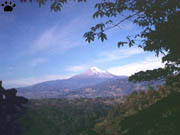 |
 |
| Volcanoes of Mexico,
left to right: Fuego del Colima (3,930m/13,000'), Orizaba (5,700 m/19,000'), Popocatepetl
(5,452 m/18,000'). |
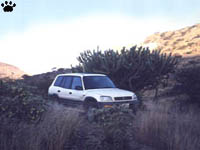
In the cactus desert or the rainforest, sleeping in
your car is always safe and comfortable. |
You can camp almost anywhere you want, as long
as your tent/car isn't visible from the road. Otherwise the police would wake
you up every few hours to warn about bandits lurking in the countryside. |
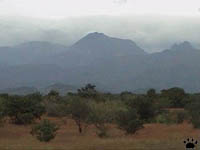
The Pacific coast of Mexico is mostly a mosaic of
dry tropical foress and savannas. Chiapas. |
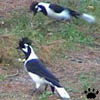 |
 |
 |
 |
 |
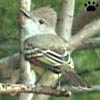 |
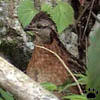 |
 |
Common birds of Northern
and Central Mexico, upper row, left to right: Cyanocorax dickeyi, Tityra
semifasciata, Parus sclateri, Pheucticus chrysopeplus, Elaenia
flavogaster, Myiarchus nuttingi; bottom row: Dactylortyx thoracicus
(female and male), Campylorhynchus gularis, Toxostoma ocellatum. |
 |
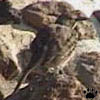 |
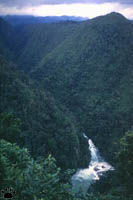
Mountain river near the
Chiapas-Guatemala border. |
I noticed that Mexican police hated local people
and was afraid of them, especially in Southern Chiapas. Despite goverment efforts,
it is still corrupt. Singling out foreign drivers to obtain bribes is not as common
and it used to be, but still happens in the capital and in resort areas. Petty
theft occurs during police searches, but never at military checkpoints: soldiers
are always honest and friendly. Only in the areas north from Mexico City, the
policemen I encountered were helpful and didn't try to stop me for imaginary violations
to get a bribe. |

Tequila and mescal are made
from Agave tequilana plants. |
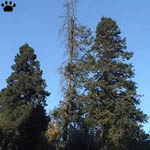 |
 |
 |
 |
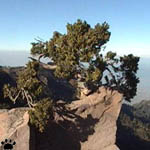 |
| Mexico is home to dozens
of endemic conifers. Left to right: Abies religiosa, Pinus sp. (3
species), Juniperus sp. Fuego del Colima. |
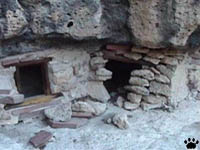
Tarahumara Indian dwellings, Barrancos del
Cobre (Copper Canyon), Coahuila. |
Generally, the North is easier to travel around,
but interesting places are few and far between there. Copper Canyon is the most
famous, but I found the Durango-Mazatlan road to be much more scenic and interesting. |
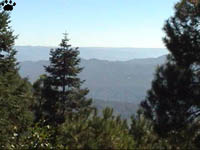
Durango fir (Abies durangensis), a rare conifer
growing near Durango-Mazatlan Highway. |
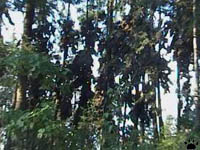 |
 |
 |
| Millions of monarch
butterflies (Danais flexippus) come from Eastern North
America to winter in a few small reserves in high-altitude fir forests of
Central Mexico. |
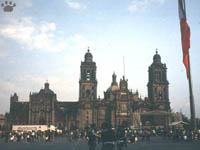
Mexico City. |
As you get closer to Mexico City, the roads get
worse, but the country gets much more interesting, including the capital itself,
with its fascinating Museo de Antropologia. |

Aztec folk dancer, Mexico City. |
 |
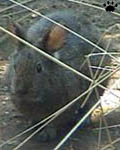 |
 |
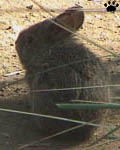 |
 |
Teporingo habitat,
Popocatepetl. |
Tallgrass pine forests
on the slopes of high volcanoes around Mexico City are home to volcano
rabbit, or teporingo (Romerolagus diazi), one of Mexico's rarest and most
interesting mammals. |
Teporingo tracks,
Popocatepetl. |

Oaxaca City. |
Another city I liked a lot was Ciudad Oaxaca.
It, too, has great museums, beautiful architecture, and a whole lot of natural
and historical sites in the vicinity. But, of course, it is less chaotic, overcrowded,
and smoggy than Mexico. |

Oaxaca City. |
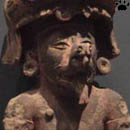 |
 |
 |
 |
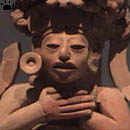 |
| Ancient artefacts from
Monte Alban Museum, Oaxaca City. |
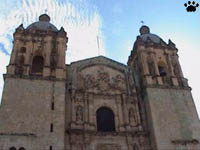
Cathedral, Oaxaca City. |
Oaxaca has the highest biological and cultural
diversity of all Mexican states. It was a major crossroads between the Sierras
and the tropics for flora, fauna and ancient civilizations. It also has nice turtles. |

Inside the cathedral, Oaxaca City. |
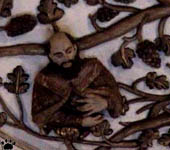 |
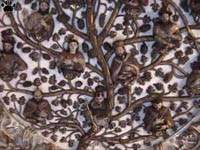 |
 |
| Details of cathedral
ceiling, Oaxaca City. |
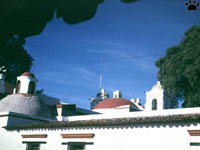
Church, El Tule. |
A small town of El Tule has one of the world's
largest trees, a 5,000-year old Mexican cypress. Even Cortez was impressed by
its size. The tree harbors nests of ten bird and two honeybee species (below). |
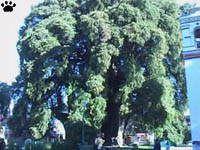
El Arbol del Tule. |
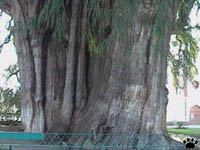 |
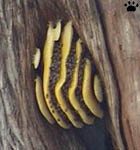 |
 |
| El Arbol del Tule, a
giant Mexican cypress (Taxodium mucronatum), Oaxaca. |

San Blas area on the Pacific coast is one of the
best places in Mexico to see waterbirds, like
these snowy egrets (Egretta thula) and roseate
spoonbills (Platalea ajaja). On the Carribean
side, try the northern tip of Yucatan Peninsula.
|
If you want to play it safe, you can cross Mexico
by toll roads (carretera cuota). They are fast and safe, but cost a lot
and exist only between major cities. To have real fun, you need to learn to navigate
Mexican backroads - see the next page for some tips. |
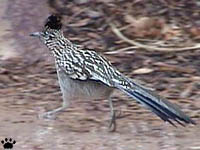
Roadrunners are among the most interesting
characters of Mexican backroads. This is greater
roadrunner (Geococcyx californianus) of the
North. Very similar lesser roadrunner (G. velox)
occurs in the South, but is less common. |

Groves of tree lupine, Jalisco.
Part 2: Driving Tips
Home
|